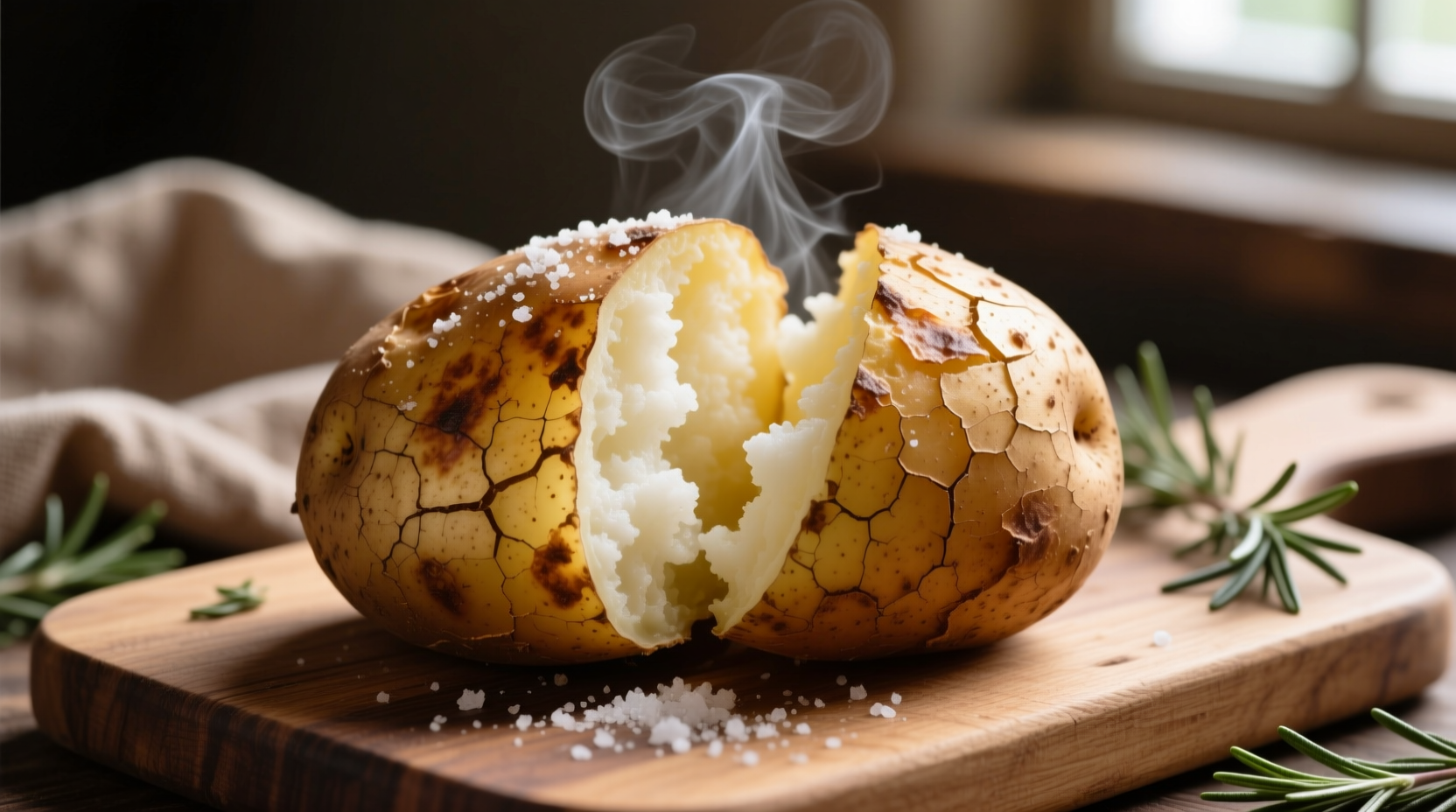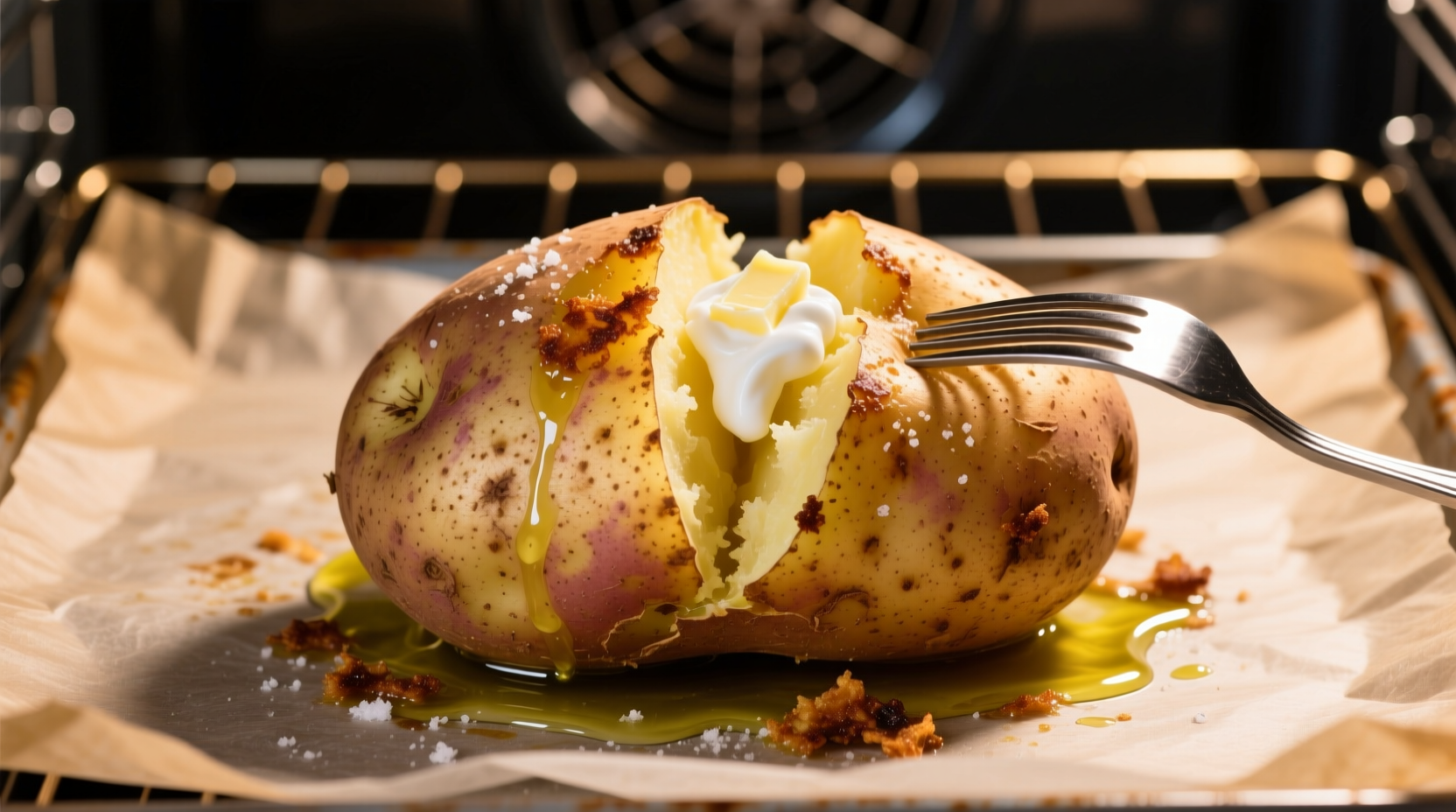Nothing beats the simple pleasure of a perfectly baked potato with crispy skin and fluffy interior. But getting that ideal texture requires precise timing and temperature control. Whether you're a beginner cook or a seasoned kitchen veteran, understanding the science behind potato baking ensures consistent results every time.
Why Baking Time Matters for Perfect Potatoes
Undercooked potatoes remain dense and starchy in the center, while overcooked ones become dry and crumbly. The ideal baking duration transforms the potato's starch structure, creating that signature fluffy texture while maintaining moisture. According to the FDA Food Code, properly cooked potatoes should reach an internal temperature of at least 185°F (85°C) for safe consumption, though optimal texture occurs at slightly higher temperatures.
Key Factors That Affect Baking Time
Several variables influence how long your potato needs in the oven. Understanding these helps you adjust baking times for perfect results:
Potato Size and Weight
The most significant factor determining baking time is the potato's size. Larger potatoes require substantially more time for heat to penetrate to the center. Here's a detailed reference guide:
| Potato Weight | Recommended Baking Time | Internal Temperature |
|---|---|---|
| 6-8 ounces (small) | 35-45 minutes | 205-210°F (96-99°C) |
| 8-10 ounces (medium) | 45-60 minutes | 205-210°F (96-99°C) |
| 10-12 ounces (large) | 55-70 minutes | 205-210°F (96-99°C) |
| 12+ ounces (extra large) | 65-75+ minutes | 205-210°F (96-99°C) |
Oven Temperature Variations
While 400°F (204°C) is the standard recommendation for baking potatoes, different temperatures yield different results:
- 375°F (190°C): Requires 55-75 minutes; produces moister interior but less crispy skin
- 400°F (204°C): Ideal balance of 45-60 minutes for medium potatoes; creates fluffy interior with crispy skin
- 425°F (218°C): Shorter time (40-50 minutes) but risks uneven cooking; excellent for crispy skin lovers
Potato Variety Differences
Not all potatoes bake the same. Russets (Idaho potatoes) are the classic baking choice with their high starch content, but other varieties have different requirements:
- Russet potatoes: Need full baking time; develop the fluffiest interior
- Sweet potatoes: Require similar time but at 400°F; internal temperature should reach 205-210°F
- Yukon Gold: Bake faster (35-50 minutes); lower starch content means less baking time needed
- Red potatoes: Not ideal for traditional baking; better for roasting at higher temperatures

Step-by-Step Guide to Baking the Perfect Potato
Preparation: Setting Up for Success
Proper preparation significantly impacts baking time and final texture:
- Wash thoroughly: Scrub potatoes under cold water to remove dirt (never peel for baking)
- Dry completely: Moisture on skin prevents crispiness; pat dry with paper towels
- Poke holes: Use a fork to pierce skin 6-8 times to allow steam to escape
- Oil and salt (optional): For extra crispy skin, rub with 1 tsp oil and coarse salt
- Room temperature: Let potatoes sit out for 20-30 minutes before baking for even cooking
Baking Process: Timing and Technique
Follow these steps for consistently perfect results:
- Preheat oven to 400°F (204°C) with rack in the center position
- Place potatoes directly on oven rack or on a baking sheet lined with parchment paper
- Set timer for 45 minutes for medium potatoes (adjust based on size chart above)
- Flip potatoes halfway through baking for even cooking
- Check for doneness starting at minimum recommended time
How to Check for Perfect Doneness
Don't rely solely on timing—use these foolproof methods to determine when your potato is perfectly baked:
- Fork test: Insert a fork into the thickest part; it should slide in with no resistance
- Squeeze test: Using oven mitts, gently squeeze potato; it should give slightly
- Thermometer check: Insert instant-read thermometer; ideal range is 205-210°F (96-99°C)
- Appearance: Skin should be crisp and slightly wrinkled; no soft spots
Common Mistakes That Affect Baking Time
Avoid these pitfalls that can throw off your baking timing:
- Starting with cold potatoes: Refrigerated potatoes add 10-15 minutes to baking time
- Wrapping in foil: Creates steamed texture rather than baked; adds 15-20 minutes to cooking time
- Crowding the oven: Prevents proper air circulation; extends baking time
- Opening the oven frequently: Each opening drops temperature significantly
- Ignoring oven hot spots: Rotate potatoes halfway through for even cooking
Special Considerations for Different Ovens
Not all ovens perform the same, which affects baking duration:
- Convection ovens: Reduce baking time by 10-15% and lower temperature by 25°F
- Toaster ovens: May require 5-10 minutes longer due to smaller size and heat distribution
- Gas vs. electric: Gas ovens often have more moisture, potentially extending baking time slightly
- Oven calibration: Use an independent oven thermometer to verify actual temperature
Advanced Tips for Perfect Results Every Time
Elevate your baked potato game with these professional techniques:
- Par-cook method: Microwave for 5 minutes first, then finish in oven for crispy skin
- Salt crust technique: Bury potatoes in coarse salt for even heat distribution
- Resting time: Let potatoes rest 5-10 minutes after baking for optimal texture
- Internal temperature precision: Remove at 205°F for fluffy texture; 210°F for extra-dry interior preferred for loaded potatoes
Storing and Reheating Leftover Baked Potatoes
Proper storage maintains quality for future enjoyment:
- Cool completely before refrigerating (within 2 hours of cooking)
- Store in airtight container for up to 5 days
- Reheat in oven at 350°F for 15-20 minutes for best texture (microwave makes skin soggy)
- Never store baked potatoes in foil, which creates a food safety risk











 浙公网安备
33010002000092号
浙公网安备
33010002000092号 浙B2-20120091-4
浙B2-20120091-4